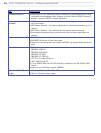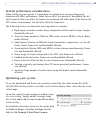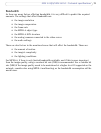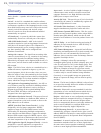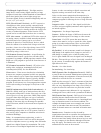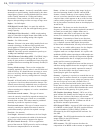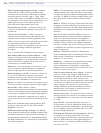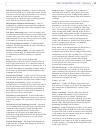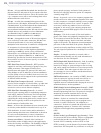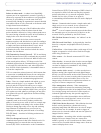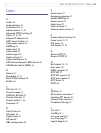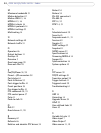
79
AXIS 241QA/AXIS 241SA - Glossary
identity of the server.
Subnet & subnet mask - A subnet is an identifiably
separate part of an organization's network. Typically, a
subnet may represent all the machines at one geographic
location, in one building, or on the same local area
network (LAN). Having an organization's network divided
into subnets allows it to be connected to the Internet with
a single shared network address.
The subnet mask is the part of the IP address that tells a
network router how to find the subnet that the data
packet should be delivered to. Using a subnet mask saves
the router having to handle the entire 32-bit IP address; it
simply looks at the bits selected by the mask.
Switch - A network device that connects network
segments together, and which selects a path for sending a
unit of data to its next destination. In general, a switch is
a simpler and faster mechanism than a router, which
requires knowledge about the network and how to
determine the route. Some switches include the router
function. See also Router.
TCP (Transmission Control Protocol) - TCP is used along
with the Internet Protocol (IP) to transmit data as packets
between computers over the network. While IP takes care
of the actual packet delivery, TCP keeps track of the
individual packets that the communication (e.g. requested
a web page file) is divided into, and, when all packets
have arrived at their destination, it reassembles them to
re-form the complete file.
TCP is a connection-oriented protocol, which means that
a connection is established between the two end-points
and is maintained until the data has been successfully
exchanged between the communicating applications.
Telnet - Telnet is a simple method with which to access
another network device, e.g. a computer. The HTTP
protocol and the FTP protocols allow you to request
specific files from remote computers, but do not allow you
logon as a user of that computer. With Telnet, you log on
as a regular user with whatever privileges you may have
been granted for specific applications and data residing
on that computer.
Time-lapse recorder - This type of video recorder is
commonly used in the security industry and has the
ability to record up to one week of video on a single tape.
The most commonly used timing is the 24-hour mode.
Having to change tapes only once a day and retaining
large amounts of information are perceived as key
advantages in using this particular mode of recording.
TVL (TV Lines) - A method of defining resolutions in
analog video.
UDP (User Datagram Protocol) - UDP is a
communications protocol that offers limited service for
exchanging data in a network that uses the Internet
Protocol (IP). UDP is an alternative to the Transmission
Control Protocol (TCP). The advantage of UDP is that it is
not required to deliver all data and may drop network
packets when there is e.g. network congestion. This is
suitable for live video, as there is no point in
re-transmitting old information that will not be displayed
anyway.
Unicast - Communication between a single sender and a
single receiver over a network. A new connection is
established for each new user. See also Multicast.
UPnP
TM
- A set of computer network protocols that allows
the automatic peer-to-peer detection of devices on the
network. UPnP is promoted by the UPnP Forum.
URL (Uniform Resource Locator) - An "address" on the
network.
USB (Universal Serial Bus) - A plug-and-play interface
between a computer and peripheral devices (scanners,
printers)
Varifocal lens - A lens that provides a wide range of focal
lengths, as opposed to a lens with a fixed focal length,
which only provides one.
Video camera - See Network camera and CCTV video
camera.
Video decoder - A network video decoder converts digital
video and audio streams back into analog signals, which
can then be displayed on standard TV sets, analog
monitors and video switches.
Video encoder (video server) - A video encoder/server
digitizes analog video signals and sends digital images
directly over an IP network, such as a LAN, intranet or the
Internet. In effect, it turns an analog video system into a
network video system and enables users to view live
images using a web browser or application software on
any local or remote computer on a network.
Video management software - Video management
software supplies the means for monitoring, analyzing
and recording network video. In its simplest form, it offers
live viewing, storage and retrieval of video sequences.
Advanced applications may also provide support for
recording of live video from multiple devices, different
recording modes, search functions, remote access via a
web browser, control of PTZ devices, etc.
VMD (Video Motion Detection) - Video Motion detection
defines activity (motion) in a monitored scene by
analyzing image data and differences in series of images.
This detection can, for example, be used to trigger an
alarm event in a network camera and start the upload of
images from the camera.
Video switcher - An analog video switcher sequentially
displays full screen images, from one camera after
another, typically at 3-5 seconds intervals. Other camera
sources are not recorded while the image source from one
camera is displayed on screen.



